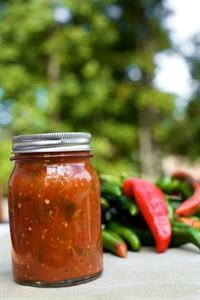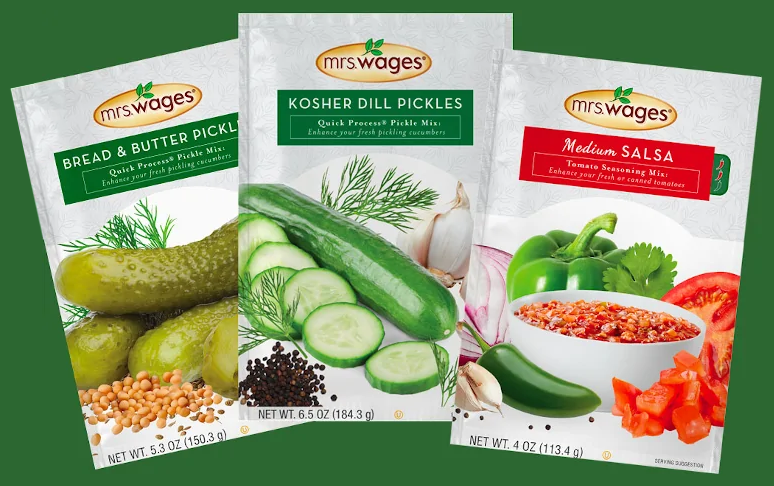
The Basic Methods of Canning: Boiling Water Bath vs. Steam Pressure

You’ll discover that canning is just as easy and just as rewarding as cooking. However, there is a difference and it is important. When you cook, you may follow a recipe. At times, you adjust it to your own tastes or those of your family. You leave out that much garlic in the stew; add nuts to that whole wheat bread recipe. You change the ingredients a bit, to make the recipe truly yours.
You cannot do this when you’re canning. Experimenting can be dangerous. Time and temperatures have been researched very carefully for canning. Too little time or too low a temperature means you’re not protecting the food against bacteria, enzymes, molds, and yeasts.
Too much time or too high temperatures may mean you’re needlessly destroying nutrients in the food, and damaging its taste. Follow the directions exactly as stated in the recipe. Let’s start with the basics.
Canning Methods
Acidity
The amount and method of heat processing used depends mainly on the acidity in food. Acidity may be natural, as in most fruits, or added, as in pickled food. Low-acid canned foods contain too little acidity to prevent the growth of heat-resistant bacteria. Acid foods contain enough acidity to block their growth or destroy them more rapidly when heated.
The term pH is a measure of acidity; the lower its value, the more acid the food. The acidity level in foods can be increased by adding vinegar, lemon juice, or citric acid. Consumers cannot accurately measure the pH of food at home.
Acid foods have a pH of 4.6 or lower. They include fruits, pickles, sauerkraut, jams, jellies, marmalades, and fruit butters. Although tomatoes usually are considered an acid food, some have pH values slightly above 4.6, therefore, if they are to be canned as acid foods, tomatoes must be acidified to a pH or 4.6 or lower with lemon juice or citric acid prior to processing. Figs and Asian pears are also acidified before processing in a boiling water bath canner.
Tomatoes, figs, and Asian pears have pH values of 4.0 to 4.6 after lemon juice or citric acid is added. Their final acidity allows the growth of some mildly heat-resistant, spore-forming bacteria. A 45- to 85-minute process time in boiling water is needed to achieve a high enough temperature to destroy bacteria and to ensure the safekeeping of canned tomatoes, figs, and Asian pears.
Jams, jellies, conserves, apple and grape juices, and some pickled products are higher in acid and have pH values around 3.0. These high acid foods have a 5 to 15-minute processing time in a boiling water bath canner.
Most berry fruits, apples, apricots, grapes, nectarines, peaches, pears, pineapples, some pickled foods, and rhubarb have pH values of 3.4 to 4.0, and require a longer processing time to destroy their native spoilage microorganisms. These foods are processed in a boiling water bath canner from 10 to 30 minutes.
Low-acid foods have pH values higher than 4.6. Meats, poultry, fish, seafood, milk and all fresh vegetables except for most tomatoes are low-acid foods with pH values above 4.6. Their natural acid level is too low to prevent the growth of the heat-resistant spore- forming bacteria common on these foods. These foods must, therefore, be canned in a pressure canner to be safe. Most mixtures of low-acid and acid foods also have pH values above 4.6 unless their recipes include enough vinegar or lemon juice to make them acid foods. These mixtures must also be processed in a pressure canner.
Boiling water bath method
This is used for acid foods. These include all fruits, tomatoes, sauerkraut, jams, jellies, preserves, and most foods to which vinegar has been added, such as most pickles and relishes.
Pressure canner method
This method is used for foods containing little acid. These include vegetables (except for tomatoes), meats, seafood, and mixtures of food that include some low-acid foods. All foods, acid and non-acid, contain enzymes that can harbor growth of molds and yeasts, which will cause food to spoil. Molds and yeasts may be inactivated or destroyed by heat through either boiling water bath or pressure canning method.
The pressure canner method is used to destroy other food-bacteria and their byproducts in home canned foods. These include Salmonella, Staphylococcus aureus, and Clostridium botulinum, the cause of botulism.
Since these harmful bacteria are not a problem in high-acid foods, there’s no reason to use this high temperature method with them. These bacteria will thrive in low-acid foods and are not destroyed by the 212°F temperature of the boiling water bath method, but are destroyed by processing at 240°F for a specific amount of time. This heat is only achievable at home through the pressure canner method.
Packing Methods
Raw Pack or Cold Pack
These terms, used interchangeably, refer to putting uncooked food into a heated jar to which a hot liquid is added.
Hot Pack
This refers to putting food that has been cooked to some degree into jars for processing. Hot pack sometimes requires less processing time, since the food is partially cooked. Sometimes it takes as long, or longer, because of the denser pack. Hot packing is often preferred because it softens the food and allows the food to be packed more easily. Instructions for each food will explain which of these packing methods should be used, and the processing time required.
Headspace
When packing prepared fruit or vegetables into jars, a certain amount of head space must allowed. Headspace is the space between the top of the produce and liquid and the rim of the jar. It allows the food to expand during the canning process and is essential if a vacuum is to be created. The amount of headspace is specific to each type of food being preserved. If too much headspace is left, the jar may not seal properly because all the air may not be driven out of the jar. If too little headspace is left, the food may bubble out during processing leaving a deposit on the lid which may interfere with the seal.
Source: Mrs. Wages Home Canning Guide and Recipes, Copyright 2012. All Rights Reserved. For even more canning tips and over 120 tested recipes from our test kitchens, be sure to order the Mrs. Wages Canning Guide.
Read More Canning 101 Tips from Mrs. Wages:
Boiling Water Canning Bath Tips
The Scoop on Jars and Lids
The Basics of Canning
Canning Equipment You’ll Need


